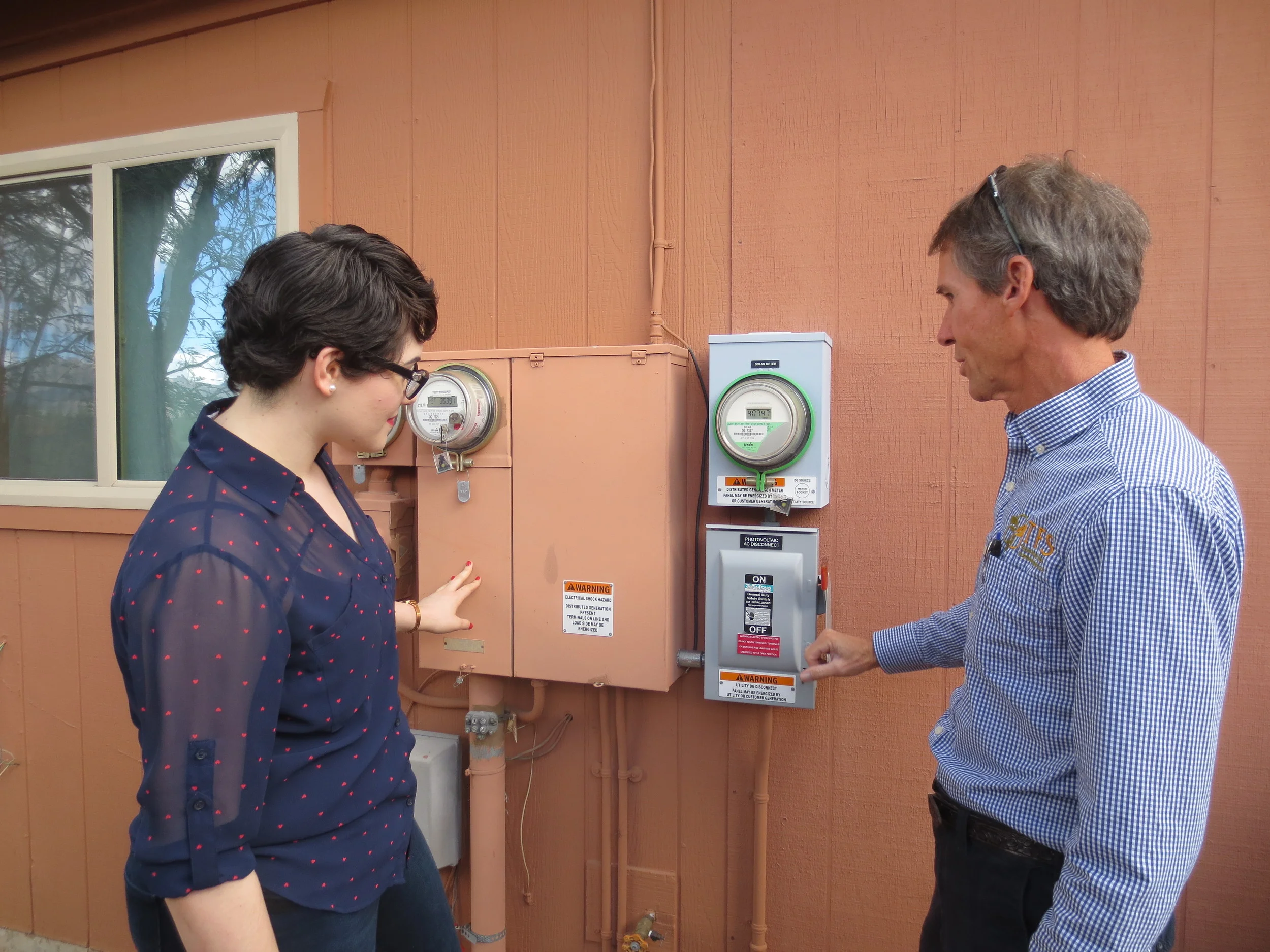A commercial solar electric (PV) system is a smart way to power your business with clean, renewable, cost-stable electricity.
Solar Panels: Powering your business with the sun starts here. Typically mounted onto your roof, solar panels are made up of photovoltaic (or PV) cells, which convert sunlight into direct current (DC) electricity, just like the electricity produced by a battery. Panels produce electricity with no moving parts and last a very long time. Solar panels can also be integrated into other structures such as carports, ramadas, parking shade structures, fixed ground mounts, and trackers.
Inverter: High power inverters convert the DC electricity from the solar panels into usable AC electricity, which is the standard form of power used by building appliances. The type of inverter that will work best for your system is typically determined by the type of modules and the size of your system.
Sub Panel: The sub panel combines the inverters’ output (AC electricity) into a single circuit that feeds the solar meter.
Disconnect: This enables electricians to disconnect the building’s electrical system from the solar electricity system. By switching the AC disconnect off, workers can safely perform system maintenance.
Solar Meter: The solar meter measures only how much electricity your PV system produces. Here in southern Arizona, our utility companies offer NET metering. This means an additional NET meter (provided by the utility company) records the amount of electricity being sent back to the utility grid as well as how much electricity you are receiving from the utility. During the day, when you produce more energy than your building can use, it is sent back to the grid and the utility will give you credit. As you use more electricity, you will first use up any credits that you have before paying for additional electricity.
Utility Grid: Grid-tied solar photovoltaic systems interface seamlessly with the utility grid, which allows the utility grid to serve as the back-up power for your building, rather than storing excess electricity in batteries. During the day, your PV system will first power any electric loads in your building, before sending any excess generation back to the utility grid. At night you’ll draw from the utility grid, essentially using the electrical grid as a giant storage battery.
PERFORMANCE
Performance monitoring allows both you and TFS to monitor your system remotely via the Internet. TFS regularly assesses your system’s energy production so that we can be certain that your solar electric system is continuously operating at peak performance.
Performance monitoring clearly conveys how well your system is working, the exact amount of energy it’s producing, environmental benefits, and the total amount of financial savings your system has provided since its installation. In real time, your monitoring system records, stores, and displays your solar electric system’s daily, monthly, and annual performance using easy-to-understand diagrams and graphs.
How will Performance Monitoring benefit your business?
Assure Optimal Performance - Performance monitoring insures that unforeseen problems will not go undetected. Monitoring your system enables us to quickly assess if your system is down or underperforming due to solar panel shading, excessive accumulation of dust, or a possible component glitch. If TFS detects a problem, we immediately take action to reduce any system downtime.
Marketing & Education - Internet-connected PCs and display kiosks placed in high traffic areas (e.g. building lobbies, retail stores, etc.) provide an effective way to demonstrate to the public how your solar system works, thus helping to promote your good environmental practice and attitude.
History & Trends - Easily view long-term trends in energy production and usage patterns under various times of day and year. You can even compare the daily, monthly, or yearly information.
VIEW SYSTEMS LIVE
Click the links below to see some solar systems in action.
Brooklyn Pizza Company
Pima Community College – East
Haley & Aldrich, Inc.
Canyon Ranch
The Body Sculpting Center
Global Community Communications




